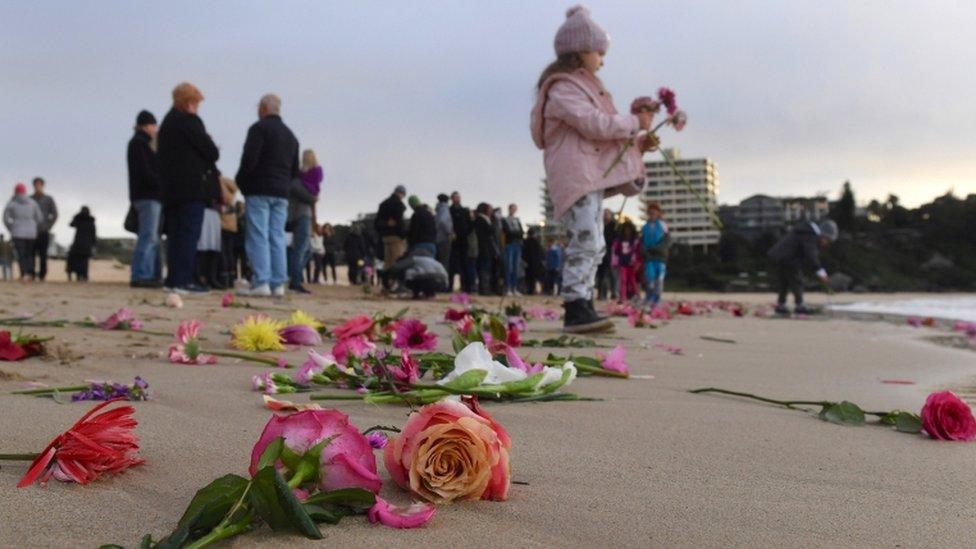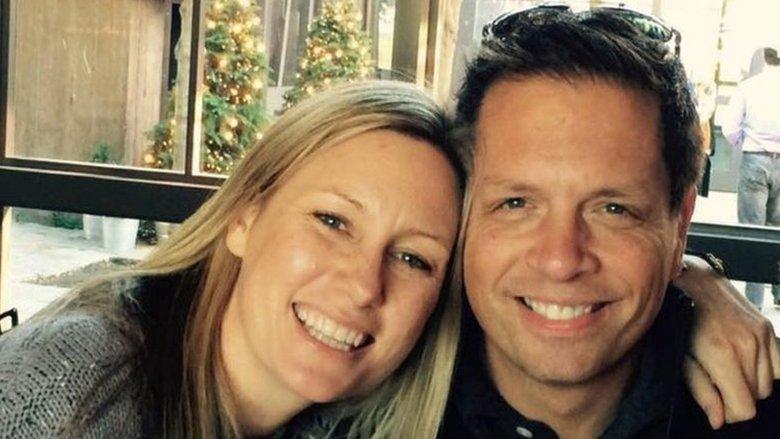Justine Damond killed by Minneapolis police: What we know
- Published
Justine Damond's family held a silent dawn vigil on Sydney's Freshwater Beach
Australian Justine Damond was killed by US police who were responding to her call at an upscale Minneapolis neighbourhood on Saturday night.
Few facts have been released by the city, Minneapolis police, or the Minnesota Bureau of Criminal Apprehension (BCA), which is leading the investigation.
The BCA investigation may take up to four months, according to the Hennepin County Attorney, who will determine whether to press charges against the officers after investigators present him with their findings.
So what do we know?
The events of that night
Just before 23:30 local time, officers Matthew Harrity and Mohamed Noor responded to Damond's 911 emergency call of a suspected assault in an alleyway behind her home.
She lived at the property with her American fiancé whom she had planned to marry in August.
Dressed in her pyjamas, Damond approached the squad car, which had its lights turned off.
A conversation followed and Officer Noor, who was in the passenger's seat, shot her through the driver's open window, Officer Harrity told officials.
"Justine should be here. This shouldn't have happened"
"Harrity indicated that he was startled by a loud sound near the" car, according to the preliminary BCA report, external released on Tuesday.
A police radio recording, external from the incident says they also mention hearing a loud noise, which they suspect are fireworks.
The 40-year-old yoga teacher was struck in the abdomen and died at the scene at 23:51 local time, despite the officers attempts to save her.
No weapons were found at the scene. Damond's mobile phone was recovered near her body.
Officer Noor has refused to speak to investigators, as is his legal right, and officials do not know if he will ever provide a statement.
Why were body cameras not on?
Neither officers had turned on their bodycams, and the vehicle's dashboard camera did not capture the incident, investigators say.
For the past six months, every police officer in Minneapolis has been equipped with body-worn cameras, but officers are required to switch them on only during certain encounters.
Unlike in Los Angeles or Washington DC, where cameras must be switched on for any response to a call for service, Minneapolis officers have more discretion to turn them off - for instance when interviewing a confidential source.
Instead, there are more than a dozen situations in which cameras should be used, according to the police manual, external, which adds that failure to use the camera could result in job termination.
Without any video evidence, investigators are hopeful that a cyclist who was seen watching police perform CPR on Damond, will come forward to give his account.
What has the reaction been?
Australian PM Malcolm Turnbull: 'We're seeking answers'
Australian media has extensively covered the story, and Prime Minister Malcolm Turnbull said that he wants answers from the US.
"It is a shocking killing, and yes, we are demanding answers on behalf of her family," he told Australian TV on Wednesday.
Her fiance, Don Damond said the family is "desperate for information", adding that "piecing together Justine's last moments before the homicide would be a small comfort as we grieve this tragedy".
Minneapolis officials have described the death as a "tragedy" and have demanded an transparent and speedy investigation.
Officer Noor, described by local media, external as a Somali-American, was described as "a caring person with a family he loves and he empathised with the loss others are experiencing".
On Wednesday morning, hundreds of people gathered for a dawn vigil at a Sydney beach to honour Ms Damond.

Friends held a vigil at Sydney's Freshwater beach on Wednesday morning
- Published17 July 2017

- Published18 July 2017
